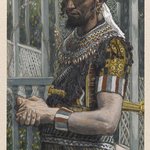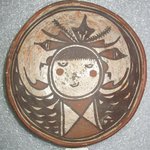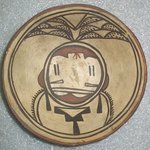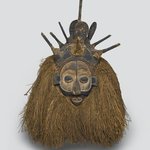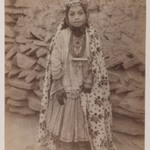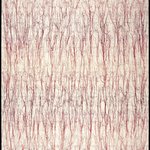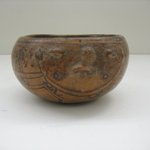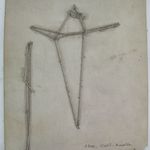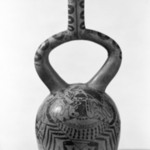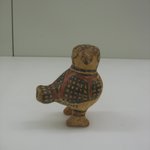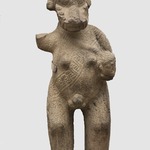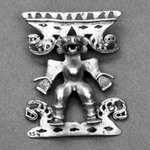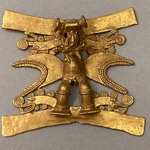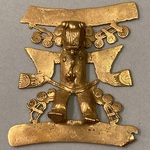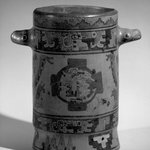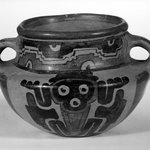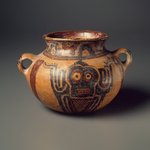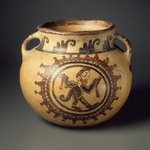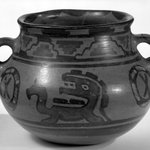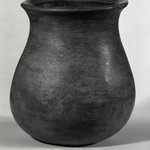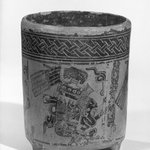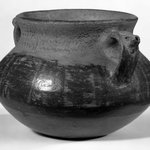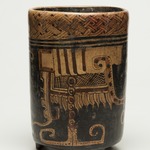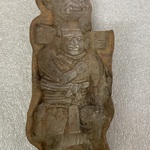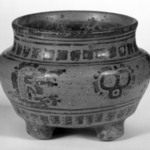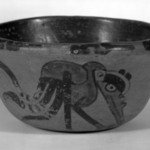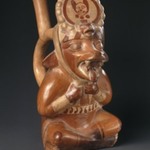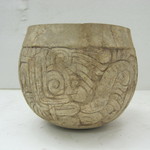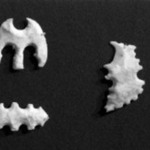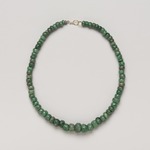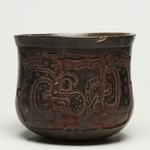Cylindrical Vessel
Arts of the Americas
The use of animal imagery to support divine rule and convey military strength was common among the ancient Maya, whose Classic period dated from 250 to 900 in a region that encompasses modern-day Guatemala, Honduras, Belize, and portions of southern Mexico. This small ceramic figurine of a nobleman has a removable serpent-headed headdress decorated with the precious and sacred tail feathers of the iridescent-green quetzal bird, which is associated with the feathered-serpent deity Kukulcán. The ceramic vessel displayed here features a procession of eleven military victors following a naked, bound prisoner. Each warrior wears a tie-dyed textile, a trophy head suspended from his belt, and an animal headdress that may represent his warrior society.
MEDIUM
Ceramic, pigment
DATES
ca. 550–950 C.E.
DIMENSIONS
6 1/4 x 5 3/8 x 5 3/8 in. (15.9 x 13.7 x 13.7 cm)
(show scale)
ACCESSION NUMBER
1998.176.2
CREDIT LINE
Gift in memory of Frederic Zeller
CATALOGUE DESCRIPTION
Polychrome vessel with a procession of warrior figures with trophy heads hanging from their waists surrounding a bound prisoner who has been stripped of his clothes except for a trophy head (possibly a disgraced warrior). The prisoner's penis has been split in two and as blood drips down, he screams in pain (the speech glyphs above his head indicate screaming). The figure behind him holds an executioner's staff topped with a large obsidian knife.
MUSEUM LOCATION
This item is not on view
CAPTION
Maya. Cylindrical Vessel, ca. 550–950 C.E. Ceramic, pigment, 6 1/4 x 5 3/8 x 5 3/8 in. (15.9 x 13.7 x 13.7 cm). Brooklyn Museum, Gift in memory of Frederic Zeller, 1998.176.2. Creative Commons-BY (Photo: Brooklyn Museum, 1998.176.2.jpg)
IMAGE
overall, 1998.176.2.jpg. Brooklyn Museum photograph
"CUR" at the beginning of an image file name means that the image was created by a curatorial staff member. These study images may be digital point-and-shoot photographs, when we don\'t yet have high-quality studio photography, or they may be scans of older negatives, slides, or photographic prints, providing historical documentation of the object.
RIGHTS STATEMENT
Creative Commons-BY
You may download and use Brooklyn Museum images of this three-dimensional work in accordance with a
Creative Commons license. Fair use, as understood under the United States Copyright Act, may also apply.
Please include caption information from this page and credit the Brooklyn Museum. If you need a high resolution file, please fill out our online
application form (charges apply).
For further information about copyright, we recommend resources at the
United States Library of Congress,
Cornell University,
Copyright and Cultural Institutions: Guidelines for U.S. Libraries, Archives, and Museums, and
Copyright Watch.
For more information about the Museum's rights project, including how rights types are assigned, please see our
blog posts on copyright.
If you have any information regarding this work and rights to it, please contact
copyright@brooklynmuseum.org.
RECORD COMPLETENESS
Not every record you will find here is complete. More information is available for some works than for others, and some entries have been updated more recently. Records are frequently reviewed and revised, and
we welcome any additional information you might have.
Tell me more.
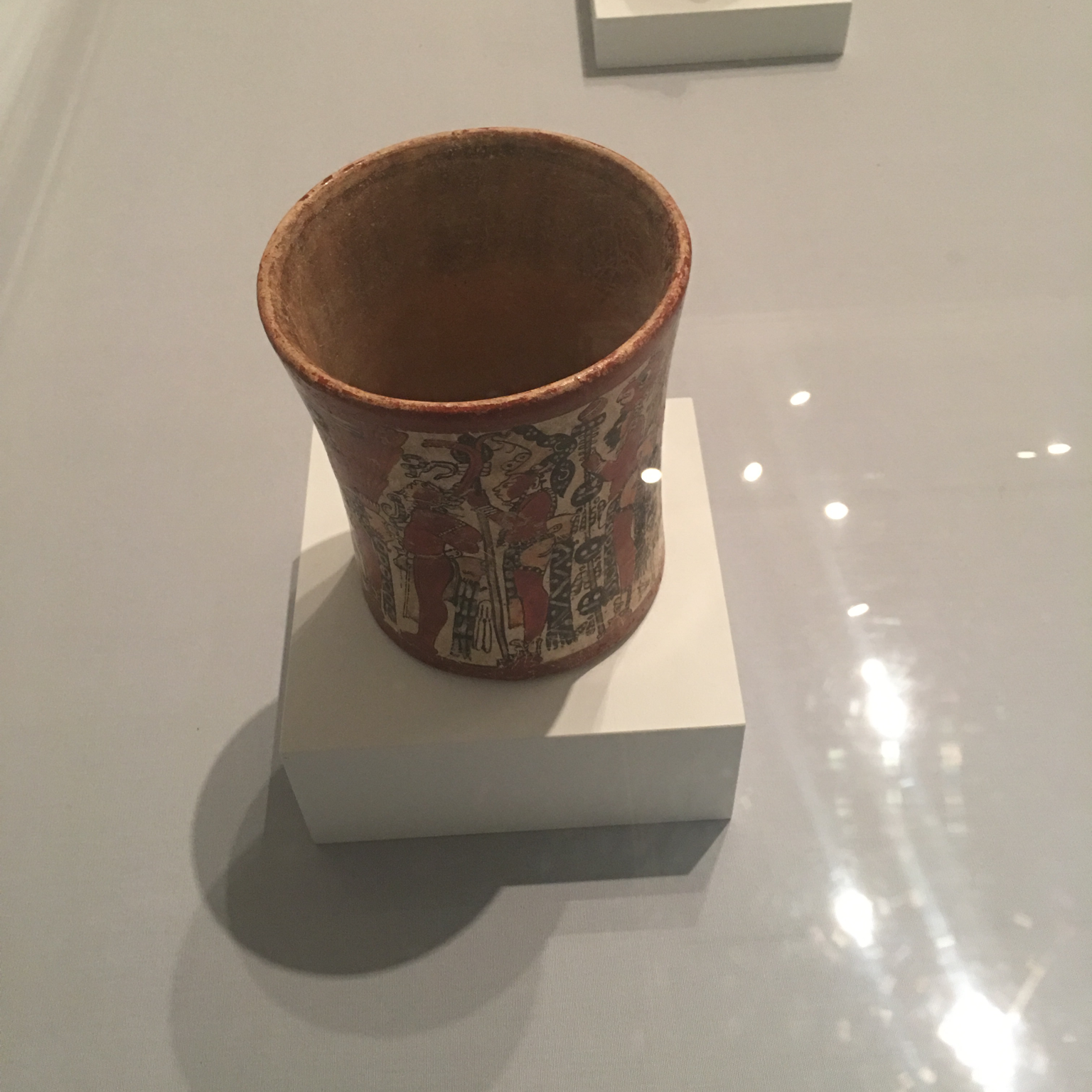
This cylindrical vessel features a procession of warriors. If you look closely you'll notice that they are carrying trophy heads at their waists.
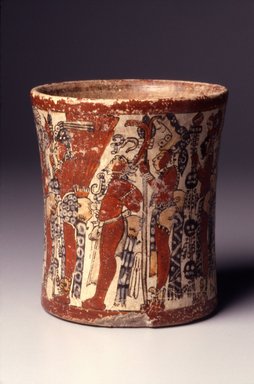


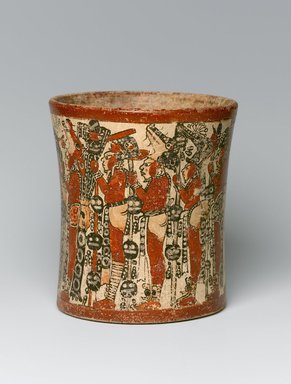
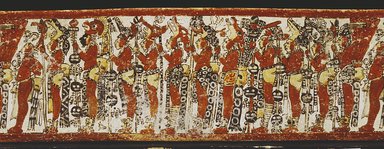







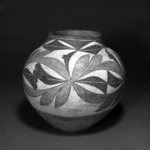
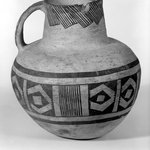
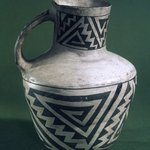
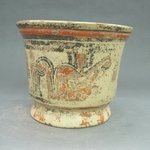
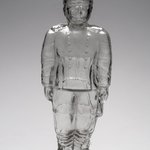

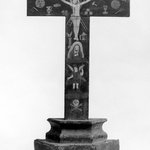

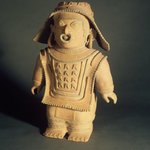
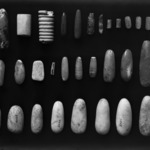
![[Untitled] (West Indian Day Parade)](https://d1lfxha3ugu3d4.cloudfront.net/images/opencollection/objects/size2_sq/1991.58.2_PS20.jpg)

